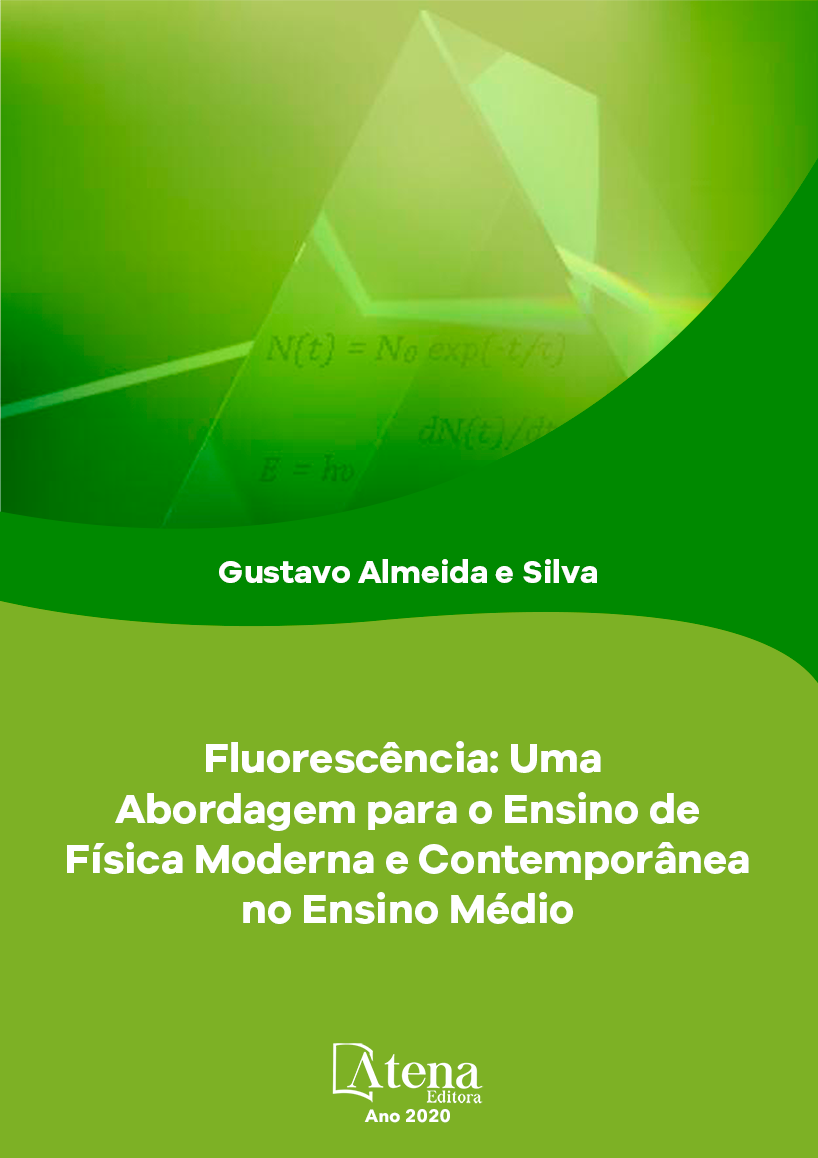
FLUORESCÊNCIA: UMA ABORDAGEM PARA O ENSINO DE FÍSICA MODERNA E CONTEMPORÂNEA NO ENSINO MÉDIO
A Física Moderna e Contemporânea (FMC) tem despertado enorme interesse nos jovens ao abordar temas relacionados aos constantes avanços científicos. O ensino de Física no Ensino Médio não vem acompanhando esse desenvolvimento de forma satisfatória, isso prejudica a formação do aluno no que diz respeito, principalmente, à alfabetização científica e na percepção da relação do cotidiano com a Física. Portanto se faz necessário a inserção de tópicos de Física Moderna e Contemporânea (FMC) no ensino médio. Existem documentos oficiais que orientam e regulamentam o ensino de Física, reforçando a importância da Física Moderna e Contemporânea em aulas do Ensino Médio. Sendo assim, nosso trabalho teve como finalidade ensinar Física Moderna e Contemporânea através do fenômeno de fluorescência. Para tanto foi elaborado uma sequência didática em forma de Unidades de Ensino Potencialmente Significativa (UEPS) para trabalhar conceitos de FMC, assim como a elaboração de material didático destinado ao aluno contendo o suporte teórico sobre os temas tratados, e ainda, o desenvolvimento e aplicação de experimentos envolvendo o fenômeno de fluorescência. Dessa forma Apresentamos uma análise qualitativa das impressões dos estudantes de 2º ano do Ensino Médio de uma escola pública sobre uma intervenção, utilizando Unidades de Ensino Potencialmente Significativa (UEPS), buscando uma aprendizagem significativa no ensino de Física Moderna e Contemporânea. Observamos que os estudantes se apropriaram de conceitos científicos referentes à quantização da energia, níveis de energia, transições eletrônicas, entre outros. Conseguiram elaborar discursos coerentes sobre o tema tratado. Foi possível perceber a importância da utilização de experimentos como abordagem didática no ensino médio, assim como a necessidade da introdução de temas de FMC. Observou-se a potencialidade do material didático destinado ao aluno pelos resultados obtidos. Conclui-se que o ensino de FMC de forma contextualizada com o cotidiano do aluno junto com o uso adequado de experimentos contribui de forma significativa para a aprendizagem do aluno.
FLUORESCÊNCIA: UMA ABORDAGEM PARA O ENSINO DE FÍSICA MODERNA E CONTEMPORÂNEA NO ENSINO MÉDIO
-
DOI: 10.22533/at.ed.612202705
-
Palavras-chave: Fluorescência, Física Moderna, Unidades de Ensino Potencialmente Significativas, Ensino Médio
-
Keywords: Fluorescence, Modern Physics, Potentially Significant Teaching Units, High School
-
Abstract:
Modern and Contemporary Physics has aroused enormous interest on young people because it brings topics related to scientific advances. On the other hand, the teaching of Physics in Secondary School is not following these advances in a satisfactory way, this impairs the student education in respect to the scientific literacy and they perception of daily relation with Physics. Therefore it becomes necessary the insertion of topics of Modern and Contemporary Physics (FMC) in high school. There are official documents that guide and regulate the Physics teaching, reinforcing the importance of Modern and Contemporary Physics in classes of High School. Thus, the aim of our work was to teach Modern and Contemporary Physics by using the phenomenon of fluorescence. For that, a didactic sequence, in the form of Potentially Meaningful Teaching Units (LIFO), was developed to work the concepts of FMC, as well as the elaboration of a lecture note for the students, with the theoretical support of the subjects treated, and also proposals of experiments involving the phenomenon of fluorescence. In this way, we present a qualitative analysis of the impressions of high school students of a public school about the intervention, using Potentially Meaningful Teaching Units (PMTU), seeking a meaningful learning in the teaching of Modern and Contemporary Physics. We observed that the students meaningfully learned scientific concepts related to quantization of energy, energy levels, electronic transitions, and many others. They have been able to formulate coherent speeches on the subject. It was possible to perceive the importance of the use of experiments as a didactic approach in secondary education, as well as the need to introduce modern and contemporany physics themes. It was observed the potential of the lecture note and it was concluded that the teaching of FMC contextualized with the daily life of the student combined with the appropriate use of experiments contributes significantly to the student's learning.
-
Número de páginas: 83
- Gustavo Almeida e Silva


